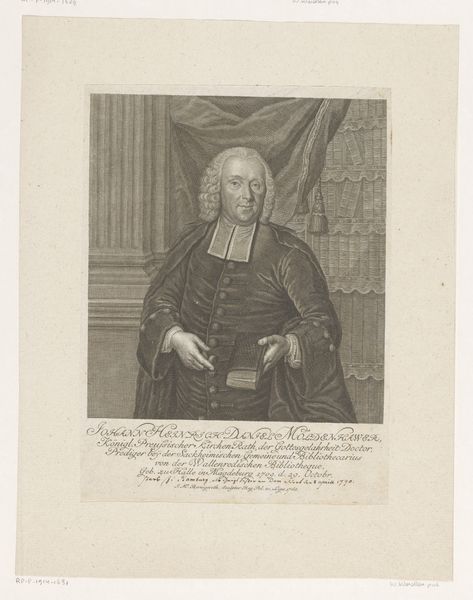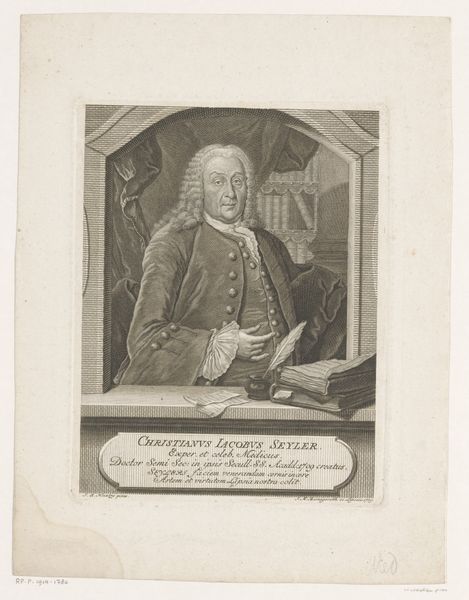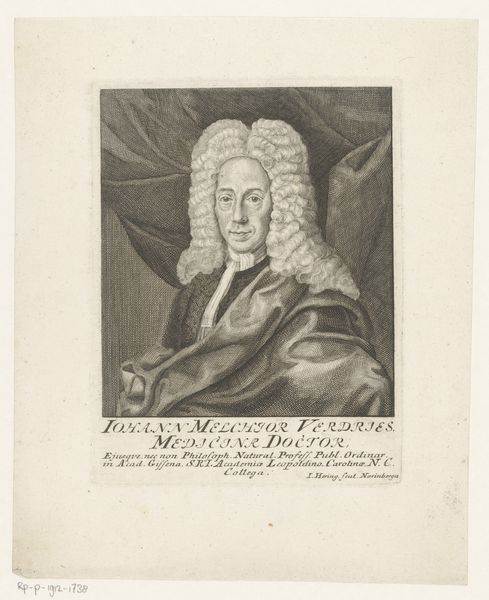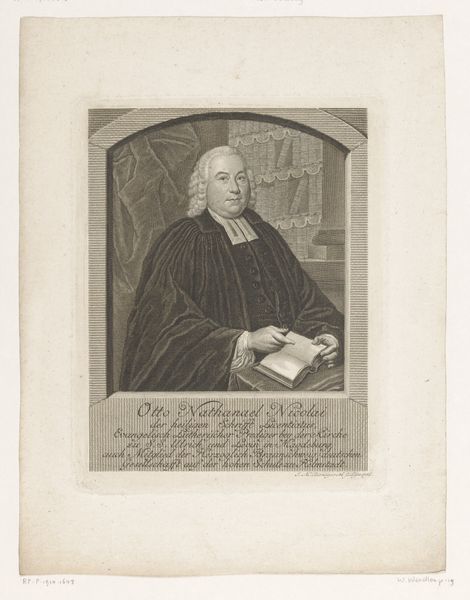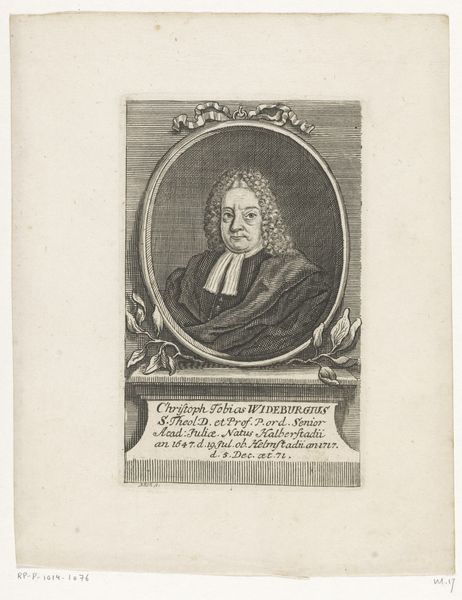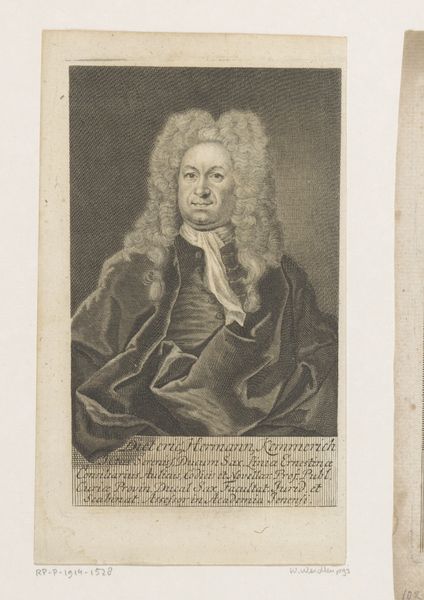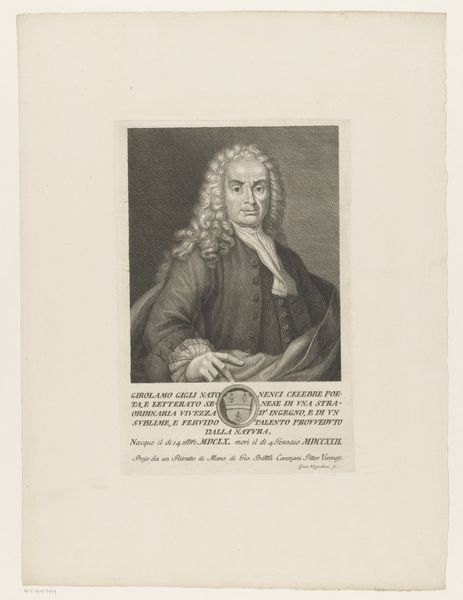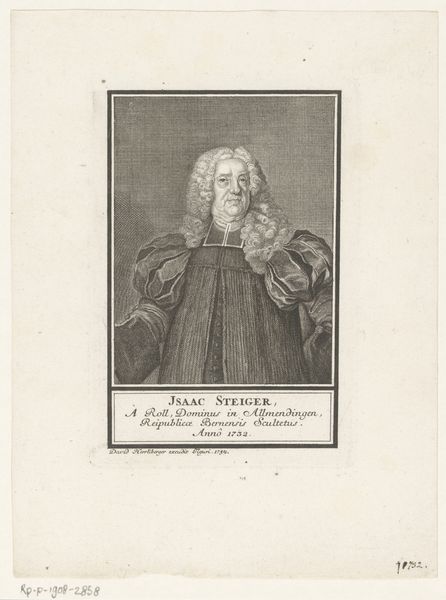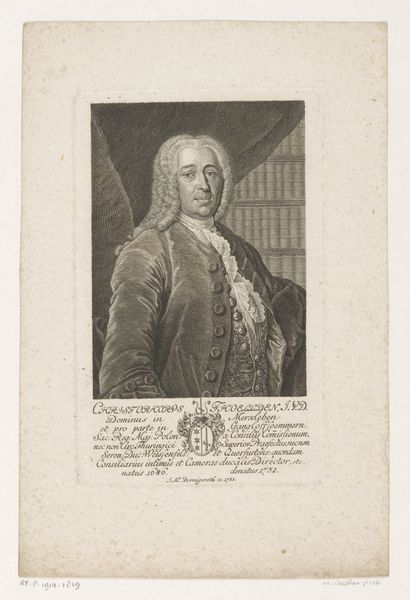
Dimensions: height 168 mm, width 110 mm
Copyright: Rijks Museum: Open Domain
Curator: Well, this is "Portret van Johann Julius Hecker," an engraving made sometime between 1768 and 1784 by Johann Friedrich Schleuen. Editor: Immediately, I'm struck by the somber yet poised presence. There's a lot of gravitas, but not in a way that feels oppressive. He feels contained. Curator: Engravings often have that meticulous quality, a sort of...distilled intensity. Looking closer, you can see the fine lines, almost vibrating. The artist used print as an early version of making accessible what might have been otherwise seen once. Editor: I’m interested in the context. Here's Hecker, presumably a man of God and education, positioned almost equally by those towering stacks of books behind him, emphasizing, perhaps, the inseparability of religious and intellectual authority during that time. How were education systems used as social architecture to maintain established paradigms? Curator: That’s an interesting perspective, one of many no doubt, that one might hold. I tend to connect more personally. Look at the almost dreamy haze created with those tight, baroque lines around his head, like a halo or a personal force field. Editor: Do you find that potentially hagiographic or perhaps a conscious, propagandistic technique aimed at elevating his image through artistic veneration? Curator: Oh, I don't think everything is some conspiracy, necessarily. Why can't it simply be that he was respected by someone? To your point about the use of education and schools…Perhaps he *earned* the veneration through his deeds. Sometimes…things are just what they are! But there's clearly more than meets the eye. We should explore the relationship between art and historical memory, particularly during this period when Enlightenment ideals and Baroque aesthetics were meeting…and maybe clashing. Editor: Indeed. The portrait serves as a rich intersection to understanding class dynamics and representation in the 18th century. It encourages conversations around the legacy of institutions and who held power through representation. Curator: Absolutely. It leaves me with this question: what can we discern of our historical narratives, by simply appreciating its beauty? It speaks a whole language by itself.
Comments
No comments
Be the first to comment and join the conversation on the ultimate creative platform.
